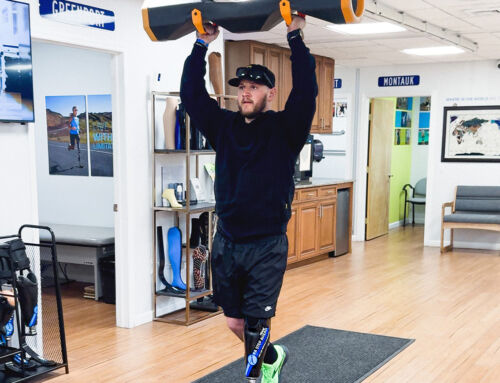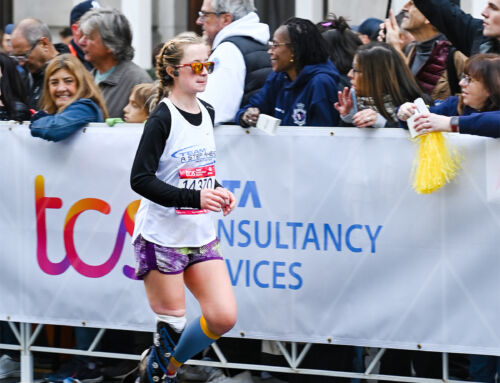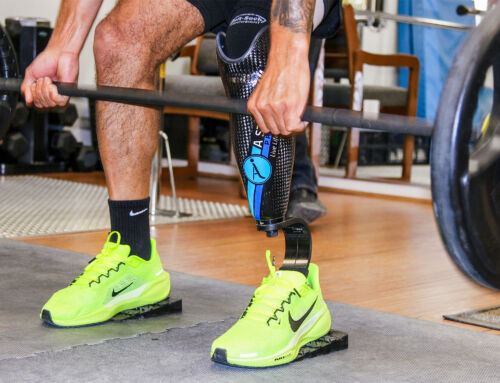It’s not an exaggeration to say that Iron Man Kona is a super challenging athletic feat. Held on the Big Island of Hawaii every October, Kona starts with a 2.4-mile open-water swim, followed by a 112-mile bike race, and ends with a literal marathon, all in one day. It takes courage to complete the entire 140.6-mile race, and even more guts to want to go back for more. But that’s exactly what Sarah Reinertsen plans to do this year for the race’s 40th anniversary.
In 2005, Reinertsen became the first female leg amputee to ever finish Kona. “I crushed it, and I finally made Iron Man history that year, but it was an incredibly hard journey,” she says. “So, I know going back that it’s still gonna be an incredibly hard day. I mentally prepare for suffering.”
The physical preparation is the fun part for Reinertsen, and she currently trains twice a day, 20 hours a week, often waking up before the sun rises to ensure she has enough time to complete swimming workouts. But in addition to her bike, Reinertsen has an added piece of equipment that requires more prep work: her prosthetic leg. “I have a little extra to figure out than most other Iron Man triathletes,” she says.
Reinertsen says she loves all the technology she gets to use for the sport, primarily the prosthetics. For running, she uses a hydraulic knee and a C-shaped carbon fiber foot that’s inspired by the hind leg of a cheetah. And for cycling, she uses a leg that has a cycling cleat built-in. “It’s not always fun to carry around 30 pounds of extra legs with you to every race, but I love that I have this closet full of legs that I get to use and that’s part of my sports equipment,” she says.
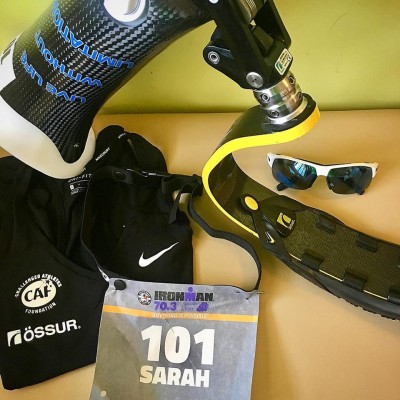 While Reinertsen geeks out about her different legs, she’s aware that it’s a privilege to have options, which is why she’s using Kona to raise $40,000 to purchase prosthetic running limbs for other people with disabilities who can’t afford their own equipment. “I want to continue to show that a woman with a disability is strong enough to do this race,” she says. “While I’m doing that, I want to make sure I’m opening the opportunity for that next generation of athletes. That helps me stay focused.”
While Reinertsen geeks out about her different legs, she’s aware that it’s a privilege to have options, which is why she’s using Kona to raise $40,000 to purchase prosthetic running limbs for other people with disabilities who can’t afford their own equipment. “I want to continue to show that a woman with a disability is strong enough to do this race,” she says. “While I’m doing that, I want to make sure I’m opening the opportunity for that next generation of athletes. That helps me stay focused.”
Ahead of Kona, Reinertsen spoke with Refinery29 about training ups and downs, mantras, and how sports allowed her to love herself.
How’d you get into triathlons? Were you always interested in endurance sports?
“I grew up in a household where my dad was a runner, and he liked to race on the weekends. I was also seven years old when my leg was amputated above the knee, and so I didn’t always know that people with disabilities could also be athletes and be part of an endurance sport event. Then, I met a guy named Jim MacLaren, who had done Iron Man on a prosthetic leg. I didn’t even know about the Iron Man, and then suddenly to meet this guy who was doing Iron Man on one leg, it blew my mind.
“I didn’t know how to ride a bike at the time, I didn’t know how to swim more than a Marco Polo-swimmer, and I really didn’t know how to run farther than a 100-meter dash. I just figured, if this guy is on a prosthetic and figured it out, I could figure it out, too. The clincher, which really sealed the deal, [was that] he said, I don’t know of any girls on a prothetic who could do an Iron Man. I would’ve been incredulous at any age, but when you’re a feisty teenager, I was like, What?! Are you kidding? You do know the girl, it’s me. I took it as a bit of a throw down. I had that athlete’s mindset, and I’m a very goal-driven type of person anyway. I wanted to prove that a girl could do it too, and that started my mission. I just started building my endurance to be able to tackle this thing.”
What’s your favorite thing about triathlons? Do you get a kick out of all the training, or are you hype about race day?
“Finishing is like the big party that you’re planning for — but I love the party planning. I do love the process of training. I love the challenge that I have every day. I love geeking out on equipment, and finding the way to adapt and do my sport. I really do love the journey of it, and you have to love it, right? Because, it’s gonna get hard, there’s gonna be times when you’re like, Ugh, why am I doing this? It’s a lot of fun, and I think for me it’s such a great way to stay in shape, but also I find that as I get older I just want to maintain that childlike enthusiasm to play. I feel like when I go training in the morning, even before or after work, it’s like my recess. Who didn’t love recess as a kid?”
Do you have a mantra that you tell yourself when things do get difficult?
“I have a ton, and I talk to myself all day. I even print mantras out on a label maker, and I put them all over my bike. Sometimes it’s a person’s name if I’m doing it in their 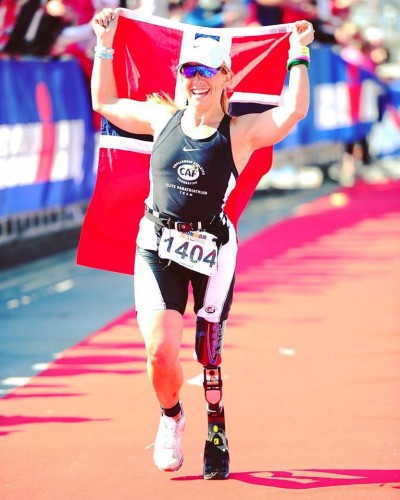 honor, I uphold them. Sometimes it’s as simple as like, in Hawaii one of my mantras was, Mai Tais, straight ahead. Sometimes it’s a favorite Hawaiian word of mine imua, which means, keep moving forward. I try to honor some of the Hawaiian heritage, and that’s been a big one that I like to say over and over. Sometimes it’s just, Show the world you’re tougher than the rest.“
honor, I uphold them. Sometimes it’s as simple as like, in Hawaii one of my mantras was, Mai Tais, straight ahead. Sometimes it’s a favorite Hawaiian word of mine imua, which means, keep moving forward. I try to honor some of the Hawaiian heritage, and that’s been a big one that I like to say over and over. Sometimes it’s just, Show the world you’re tougher than the rest.“
As an athlete, I wanted to ask you what you think about body positivity. Everyone has a different relationship to their body, so everyone has a different definition of body positivity. What’s yours?
“I think this is an evolving conversation, and I’ve struggled. Being the only kid in my school that wore a prosthetic leg made my teenage years very hard in trying to find my way to feel good in my body. Sports has been the vehicle that has allowed me to embrace my body, flaws and all. I used to sort of resent my prosthetic leg and having a stump, but now I’m so proud of that. I realized if I hadn’t lost my leg, I wouldn’t have found this other half of myself.
“Being an athlete has allowed me to really love myself, and to realize that my body is a gift. When I met [Jim MacLaren], he had lost his leg from a motorcycle accident, and came back from that accident and went on to do Iron Man. Then he had another accident, when he was riding his bike in California, and he became a quadriplegic. That made me realize, even with my disability, I don’t know how long I have the body that I have. I could become more disabled, so I’m not going to waste my two legs — even if I only have one, I’m not gonna waste a prosthetic or the real leg. I’m just gonna use my body while I’ve got it.”
